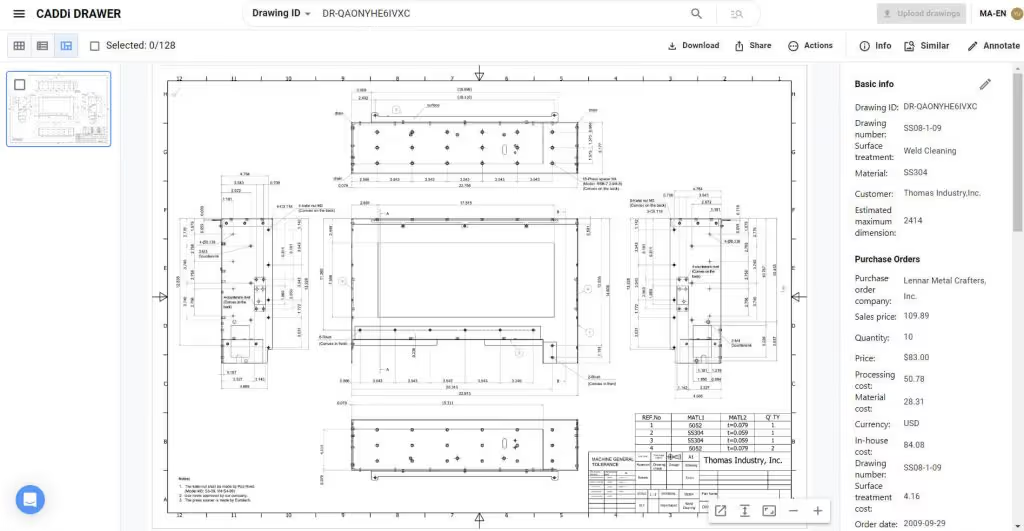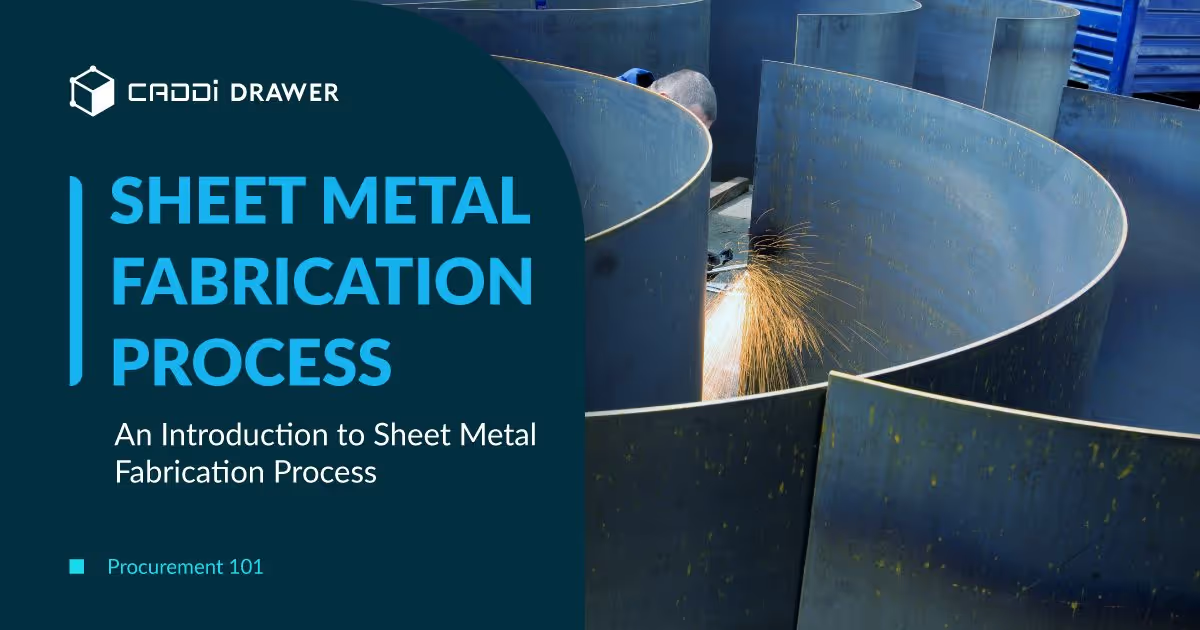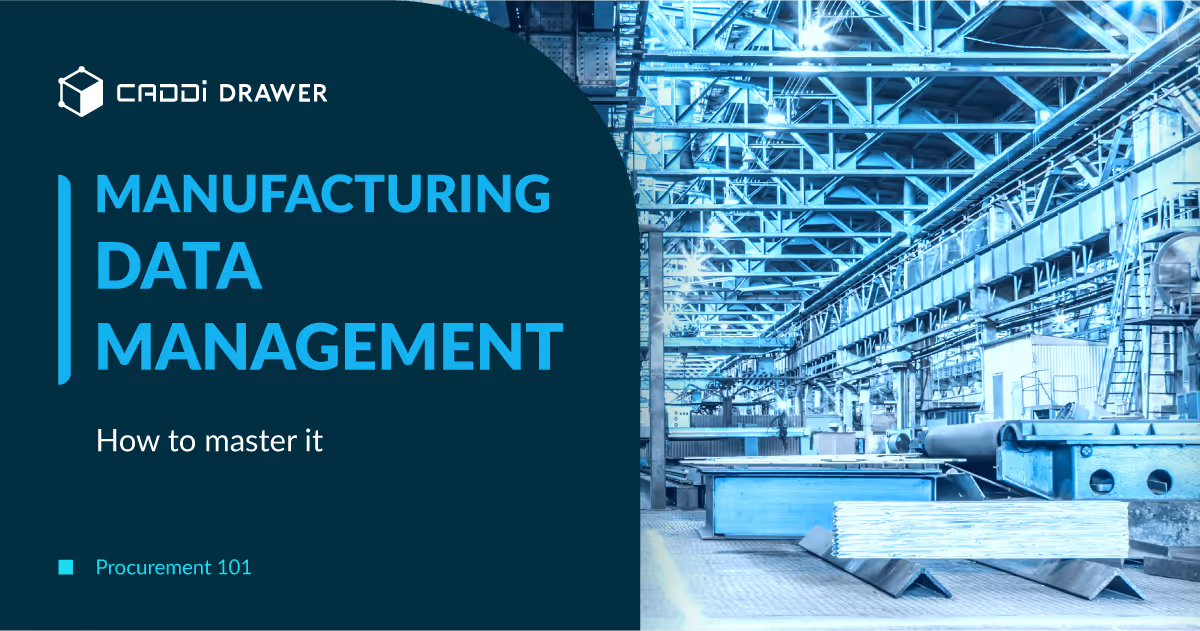Procurement 101: Request for Quotation – Beyond mere price comparison

Table of Contents

Navigating the intricate maze of procurement, the Request for Quotation (RFQ) stands out not just as a routine step but as a pivotal element that could make or break the effectiveness of procurement and supplier management strategies.
Far from being a mere formality of collecting bids, the RFQ process demands a nuanced approach, where success hinges on thorough evaluation, strategic negotiation, and a deep understanding of both the market and the specific needs of the business.
This complexity underscores the importance of RFQs in securing not only the best prices but also in fostering long-term partnerships with suppliers that can deliver quality, reliability, and innovation.
Understanding RFQs
An RFQ is a procurement document sent by a buyer to potential suppliers to solicit quotes for the supply of specific products. Unlike its cousins, the Request for Proposal (RFP) and Request for Information (RFI), an RFQ zeroes in on pricing as the primary criteria, assuming that the buyer’s needs and specifications are already well-defined.
However, this focus on cost does not diminish the RFQ’s complexity or its strategic value in procurement. For instance, a study from the Institute of Supply Management suggests that leveraging detailed RFQs can lead to cost savings of up to 15% by fostering competitive pricing among suppliers. Yet, this is just the tip of the iceberg. Beyond pricing, RFQs offer insights into suppliers’ capacities, lead times, and their ability to meet quality standards, making them an indispensable tool for procurement professionals aiming for both efficiency and effectiveness.
Types of RFQs
Navigating the procurement landscape requires a nuanced understanding of the different RFQ types available to procurement departments. Each type has its unique advantages and challenges, catering to various procurement strategies and objectives.
Sealed Bid: This method epitomizes confidentiality, with vendors’ bids remaining undisclosed until the deadline. It’s a common choice in government procurements, ensuring a level playing field. For instance, the U.S. Department of Defense often employs sealed bids for its contracts, emphasizing fairness and transparency.
Invited Bid: Tailored for precision, invited bids limit the pool to pre-selected vendors, often based on past performance or specific expertise. This approach streamlines the process, ensuring bids from only the most qualified vendors. A notable example is Boeing’s supplier selection for its 787 Dreamliner project, where only pre-vetted suppliers were invited to bid, ensuring high-quality components and innovation.
Reverse Auction: The dynamic and competitive nature of reverse auctions can lead to significant cost savings. Vendors lower their prices in real-time to win contracts, prioritizing price over other factors. General Electric has successfully used reverse auctions to reduce costs in purchasing materials and services, reportedly saving up to 20% in certain categories.
Open Bid: Open bids encourage transparency and competition, allowing any qualified vendor to submit a bid. This approach can lead to unexpected savings and new vendor discoveries. Small businesses, in particular, find open bids a gateway to working with large organizations, offering competitive prices and innovative solutions.
The RFQ Process: A Step-by-Step Guide
An effective RFQ process is more than just sending out a request and waiting for responses. It involves a series of strategic steps designed to ensure that procurement teams can secure the best value and quality for their organizations.
Preparation and requirements definition
The foundation of a successful RFQ process lies in thorough preparation. Identifying precise needs and specifications ensures that responses are relevant and comparable. For instance, when Apple Inc. sources components for its devices, detailed specifications are provided to potential suppliers, ensuring that only those capable of meeting Apple’s rigorous standards respond.
Vendor selection and invitation
Choosing the right vendors to invite is a critical step. For example, when Tesla Inc. looks for suppliers, it doesn’t just focus on cost but also on innovation, sustainability, and the ability to scale production. This strategic selection process has enabled Tesla to maintain high quality while scaling up production rapidly.
Evaluation
Once responses are received, the focus shifts to evaluating bids not just on price but on overall value. This includes quality, delivery times, and after-sales support. Amazon, known for its efficiency, employs a comprehensive evaluation framework that assesses vendors on multiple dimensions, ensuring that it partners with suppliers that can meet its high standards for customer satisfaction.
Negotiation
Following the evaluation of bids, effective negotiation in RFQ processes should aim to achieve a win-win situation for both parties. Negotiators should leverage the comprehensive evaluation data to discuss potential improvements in quality, delivery times, production scalability, and after-sales support, aiming to align the vendor’s offerings with the company’s needs while ensuring fair and competitive pricing. This approach fosters long-term partnerships and continuous improvement.
Challenges in the PFR process
The RFQ process is pivotal in procurement and supply chain operations but is fraught with challenges that can impede its success. Among these challenges, the phenomenon of tribal knowledge—where critical techniques and insights are not formally documented but instead reside within the experience and knowledge of select individuals—stands out, especially in the realms of supplier selection and negotiation.
Complexity of requirements
Defining and conveying the specifications for required products can be intricate. The reliance on experienced personnel to interpret or articulate these requirements can exacerbate the risk of miscommunication, as their tacit understanding may not be fully shared with suppliers or even within the procurement team.
Additionally, in situations where the buyer’s side experiences turnover due to job changes, it is possible that a specific supplier, engaged in long-term transactions, may have more knowledge about the product in question than the newly appointed buyer.
Supplier selection
Selecting the most appropriate suppliers from a vast pool requires a nuanced understanding of what makes a supplier reliable and fit for the project’s specific needs.
In manufacturing, it is not uncommon to find that merely looking at supplier performance data (which, of course, is very important) is not sufficient for an accurate capability assessment. For instance, the competitiveness of small to medium-sized job shops often depends on the expertise of a specific few individuals. To understand such dynamics, it becomes essential to visit the factories in person, observe the operations directly, and talk to people on the ground to obtain first-hand information.
This decision-making process tends to be heavily influenced by personal experiences and insights, which if not properly documented or shared, can lead to a dependency on a few knowledgeable individuals. The challenge lies in democratizing this knowledge so that it can be leveraged across the organization.
Time constraints
In today’s fast-paced environment, where the demand for speed is ever-increasing, there are seldom cases where procurement lead times are generous. Consequently, the RFQ process is often subject to time constraints.
Therefore, despite the desire for thorough vetting, decisions on suppliers are often made based solely on price comparisons, favoring suppliers with extensive transaction histories, or relying too heavily on buyers who can make quick judgments based on experience (without actually knowing if those decisions are correct). This tendency can hinder the exploration of potentially more beneficial partnerships and lead to less optimal procurement outcomes.
Data management and analysis
In RFQ processes, setting a target price, selecting suppliers, and successful negotiation rely heavily on the presence of accurate and manageable data. Efficiently leveraging past purchase data, performance metrics, and market analysis requires a systematic approach to data management.
However, these data are typically scattered across multiple systems, or worse, some critical information exists only in spreadsheets held by individual procurement personnel, a common occurrence in the manufacturing procurement world. Also, when insights from these data points remain as tribal knowledge, it hinders the procurement team’s ability to make informed, consistent decisions.
How CADDi Drawer Can Help
CADDi Drawer revolutionizes the RFQ process with its cutting-edge technology and data-driven capabilities, fundamentally transforming how procurement departments approach supplier selection, negotiation, and pricing strategies. By effectively bridging the gap caused by complex data management and tribal knowledge, CADDi Drawer ensures that critical insights and expertise are no longer confined to the minds of a few experienced individuals but are accessible across the organization.
This breakthrough not only streamlines procurement processes but also democratizes access to vital information, empowering teams to overcome the challenges traditionally associated with tribal knowledge in the RFQ process. The following describes how CADDi Drawer can support the resolution of such challenges.
Leveraging data assets and knowledge through similarity search and data linkage
One of CADDi Drawer’s standout features is its ability to search an extensive database of drawings, identifying those similar to the targeted ones for quotation requests. It categorizes not only by basic information like material but also by part shape.
This leverages historical price and supplier data to inform current decisions. Imagine being able to access a comprehensive history of pricing and supplier performance with just a few clicks, ensuring that your RFQs are based on informed, data-driven insights. If your past RFQ formats are linked to drawings, it also becomes possible to share insights on how the RFQ process itself should be conducted.
Data-Driven target price setting
The platform facilitates analysis using past price data associated with similar drawings, empowering procurement teams to establish reasonable target prices for their quotations without relying on individual memory or experience. This feature demystifies the often opaque process of setting price expectations and ensures that procurement teams have a solid benchmark grounded in historical data, making the RFQ process more strategic and objective.

Optimal supplier selection
Beyond just identifying similar past projects, CADDi Drawer also supports the selection of the most suitable suppliers by analyzing organizational history to pinpoint suppliers who have previously delivered similar parts. This comprehensive overview allows procurement teams to make informed decisions about which suppliers are best equipped to meet their specific needs, taking into account factors such as quality, reliability, and past performance.

Facilitated negotiations
With CADDi Drawer, negotiations with suppliers are no longer based on gut feelings or approximate estimations. The platform provides detailed procurement performance and price breakdowns for similar drawings, enabling logical and fact-based negotiations. This transparency ensures that both parties can engage in discussions with a clear understanding of the value and costs involved, leading to more favorable terms and stronger supplier relationships.
Manufacturers of industrial machinery and equipment, such as Ebara, are actually utilizing these features of CADDi Drawer to successfully enhance the RFQ process.
Navigating the intricate maze of procurement, the Request for Quotation (RFQ) stands out not just as a routine step but as a pivotal element that could make or break the effectiveness of procurement and supplier management strategies.
Far from being a mere formality of collecting bids, the RFQ process demands a nuanced approach, where success hinges on thorough evaluation, strategic negotiation, and a deep understanding of both the market and the specific needs of the business.
This complexity underscores the importance of RFQs in securing not only the best prices but also in fostering long-term partnerships with suppliers that can deliver quality, reliability, and innovation.
Understanding RFQs
An RFQ is a procurement document sent by a buyer to potential suppliers to solicit quotes for the supply of specific products. Unlike its cousins, the Request for Proposal (RFP) and Request for Information (RFI), an RFQ zeroes in on pricing as the primary criteria, assuming that the buyer’s needs and specifications are already well-defined.
However, this focus on cost does not diminish the RFQ’s complexity or its strategic value in procurement. For instance, a study from the Institute of Supply Management suggests that leveraging detailed RFQs can lead to cost savings of up to 15% by fostering competitive pricing among suppliers. Yet, this is just the tip of the iceberg. Beyond pricing, RFQs offer insights into suppliers’ capacities, lead times, and their ability to meet quality standards, making them an indispensable tool for procurement professionals aiming for both efficiency and effectiveness.
Types of RFQs
Navigating the procurement landscape requires a nuanced understanding of the different RFQ types available to procurement departments. Each type has its unique advantages and challenges, catering to various procurement strategies and objectives.
Sealed Bid: This method epitomizes confidentiality, with vendors’ bids remaining undisclosed until the deadline. It’s a common choice in government procurements, ensuring a level playing field. For instance, the U.S. Department of Defense often employs sealed bids for its contracts, emphasizing fairness and transparency.
Invited Bid: Tailored for precision, invited bids limit the pool to pre-selected vendors, often based on past performance or specific expertise. This approach streamlines the process, ensuring bids from only the most qualified vendors. A notable example is Boeing’s supplier selection for its 787 Dreamliner project, where only pre-vetted suppliers were invited to bid, ensuring high-quality components and innovation.
Reverse Auction: The dynamic and competitive nature of reverse auctions can lead to significant cost savings. Vendors lower their prices in real-time to win contracts, prioritizing price over other factors. General Electric has successfully used reverse auctions to reduce costs in purchasing materials and services, reportedly saving up to 20% in certain categories.
Open Bid: Open bids encourage transparency and competition, allowing any qualified vendor to submit a bid. This approach can lead to unexpected savings and new vendor discoveries. Small businesses, in particular, find open bids a gateway to working with large organizations, offering competitive prices and innovative solutions.
The RFQ Process: A Step-by-Step Guide
An effective RFQ process is more than just sending out a request and waiting for responses. It involves a series of strategic steps designed to ensure that procurement teams can secure the best value and quality for their organizations.
Preparation and requirements definition
The foundation of a successful RFQ process lies in thorough preparation. Identifying precise needs and specifications ensures that responses are relevant and comparable. For instance, when Apple Inc. sources components for its devices, detailed specifications are provided to potential suppliers, ensuring that only those capable of meeting Apple’s rigorous standards respond.
Vendor selection and invitation
Choosing the right vendors to invite is a critical step. For example, when Tesla Inc. looks for suppliers, it doesn’t just focus on cost but also on innovation, sustainability, and the ability to scale production. This strategic selection process has enabled Tesla to maintain high quality while scaling up production rapidly.
Evaluation
Once responses are received, the focus shifts to evaluating bids not just on price but on overall value. This includes quality, delivery times, and after-sales support. Amazon, known for its efficiency, employs a comprehensive evaluation framework that assesses vendors on multiple dimensions, ensuring that it partners with suppliers that can meet its high standards for customer satisfaction.
Negotiation
Following the evaluation of bids, effective negotiation in RFQ processes should aim to achieve a win-win situation for both parties. Negotiators should leverage the comprehensive evaluation data to discuss potential improvements in quality, delivery times, production scalability, and after-sales support, aiming to align the vendor’s offerings with the company’s needs while ensuring fair and competitive pricing. This approach fosters long-term partnerships and continuous improvement.
Challenges in the PFR process
The RFQ process is pivotal in procurement and supply chain operations but is fraught with challenges that can impede its success. Among these challenges, the phenomenon of tribal knowledge—where critical techniques and insights are not formally documented but instead reside within the experience and knowledge of select individuals—stands out, especially in the realms of supplier selection and negotiation.
Complexity of requirements
Defining and conveying the specifications for required products can be intricate. The reliance on experienced personnel to interpret or articulate these requirements can exacerbate the risk of miscommunication, as their tacit understanding may not be fully shared with suppliers or even within the procurement team.
Additionally, in situations where the buyer’s side experiences turnover due to job changes, it is possible that a specific supplier, engaged in long-term transactions, may have more knowledge about the product in question than the newly appointed buyer.
Supplier selection
Selecting the most appropriate suppliers from a vast pool requires a nuanced understanding of what makes a supplier reliable and fit for the project’s specific needs.
In manufacturing, it is not uncommon to find that merely looking at supplier performance data (which, of course, is very important) is not sufficient for an accurate capability assessment. For instance, the competitiveness of small to medium-sized job shops often depends on the expertise of a specific few individuals. To understand such dynamics, it becomes essential to visit the factories in person, observe the operations directly, and talk to people on the ground to obtain first-hand information.
This decision-making process tends to be heavily influenced by personal experiences and insights, which if not properly documented or shared, can lead to a dependency on a few knowledgeable individuals. The challenge lies in democratizing this knowledge so that it can be leveraged across the organization.
Time constraints
In today’s fast-paced environment, where the demand for speed is ever-increasing, there are seldom cases where procurement lead times are generous. Consequently, the RFQ process is often subject to time constraints.
Therefore, despite the desire for thorough vetting, decisions on suppliers are often made based solely on price comparisons, favoring suppliers with extensive transaction histories, or relying too heavily on buyers who can make quick judgments based on experience (without actually knowing if those decisions are correct). This tendency can hinder the exploration of potentially more beneficial partnerships and lead to less optimal procurement outcomes.
Data management and analysis
In RFQ processes, setting a target price, selecting suppliers, and successful negotiation rely heavily on the presence of accurate and manageable data. Efficiently leveraging past purchase data, performance metrics, and market analysis requires a systematic approach to data management.
However, these data are typically scattered across multiple systems, or worse, some critical information exists only in spreadsheets held by individual procurement personnel, a common occurrence in the manufacturing procurement world. Also, when insights from these data points remain as tribal knowledge, it hinders the procurement team’s ability to make informed, consistent decisions.
How CADDi Drawer Can Help
CADDi Drawer revolutionizes the RFQ process with its cutting-edge technology and data-driven capabilities, fundamentally transforming how procurement departments approach supplier selection, negotiation, and pricing strategies. By effectively bridging the gap caused by complex data management and tribal knowledge, CADDi Drawer ensures that critical insights and expertise are no longer confined to the minds of a few experienced individuals but are accessible across the organization.
This breakthrough not only streamlines procurement processes but also democratizes access to vital information, empowering teams to overcome the challenges traditionally associated with tribal knowledge in the RFQ process. The following describes how CADDi Drawer can support the resolution of such challenges.
Leveraging data assets and knowledge through similarity search and data linkage
One of CADDi Drawer’s standout features is its ability to search an extensive database of drawings, identifying those similar to the targeted ones for quotation requests. It categorizes not only by basic information like material but also by part shape.
This leverages historical price and supplier data to inform current decisions. Imagine being able to access a comprehensive history of pricing and supplier performance with just a few clicks, ensuring that your RFQs are based on informed, data-driven insights. If your past RFQ formats are linked to drawings, it also becomes possible to share insights on how the RFQ process itself should be conducted.
Data-Driven target price setting
The platform facilitates analysis using past price data associated with similar drawings, empowering procurement teams to establish reasonable target prices for their quotations without relying on individual memory or experience. This feature demystifies the often opaque process of setting price expectations and ensures that procurement teams have a solid benchmark grounded in historical data, making the RFQ process more strategic and objective.

Optimal supplier selection
Beyond just identifying similar past projects, CADDi Drawer also supports the selection of the most suitable suppliers by analyzing organizational history to pinpoint suppliers who have previously delivered similar parts. This comprehensive overview allows procurement teams to make informed decisions about which suppliers are best equipped to meet their specific needs, taking into account factors such as quality, reliability, and past performance.

Facilitated negotiations
With CADDi Drawer, negotiations with suppliers are no longer based on gut feelings or approximate estimations. The platform provides detailed procurement performance and price breakdowns for similar drawings, enabling logical and fact-based negotiations. This transparency ensures that both parties can engage in discussions with a clear understanding of the value and costs involved, leading to more favorable terms and stronger supplier relationships.
Manufacturers of industrial machinery and equipment, such as Ebara, are actually utilizing these features of CADDi Drawer to successfully enhance the RFQ process.
Ready to see CADDi Drawer in action? Get a personalized demo.
Subscribe to our Blog!
Related Resources












.svg)



.svg)
.svg)
.svg)


